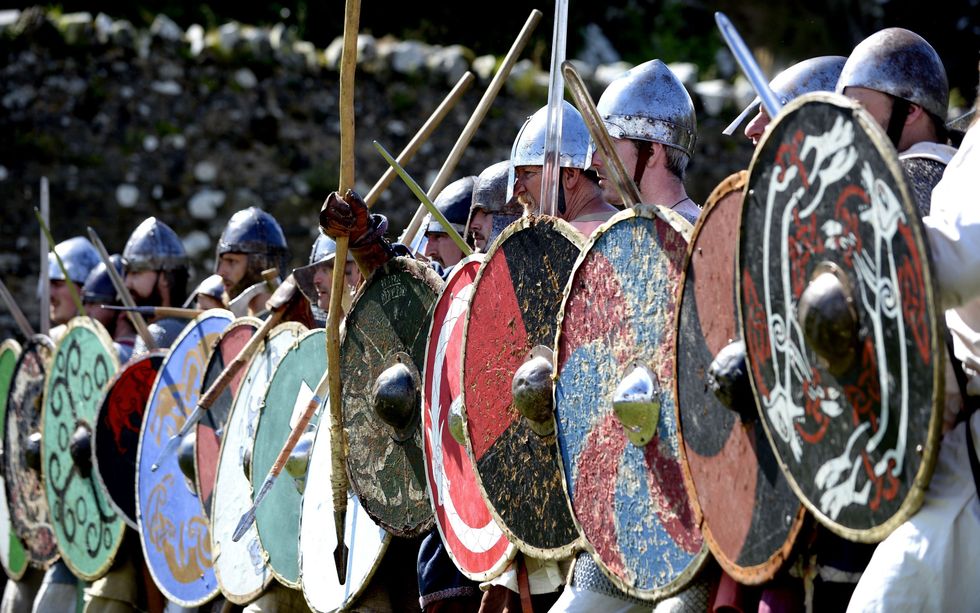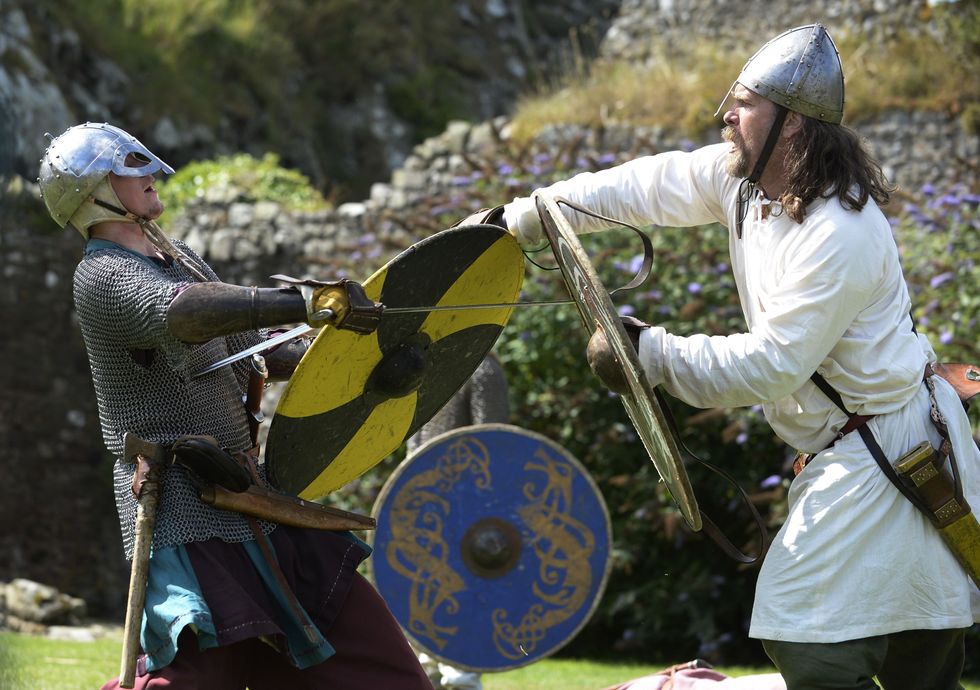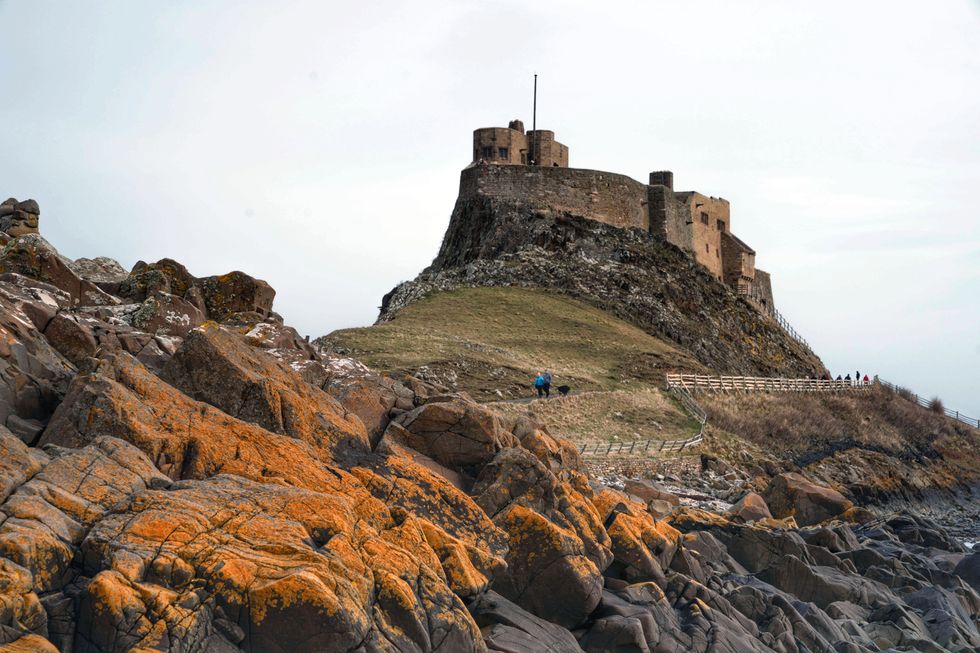James Saunders
Guest Reporter
Viking raiders who invaded Britain may have actually been returning to their ancestral homeland, groundbreaking new DNA research has revealed.
A new study has found that human remains from Scandinavia dating before the 8th century Viking raids show genetic links to Britain and central Europe - the same places the early Norsemen went on to pillage.
Scientists discovered evidence of a large migration northwards in the centuries before the Vikings began their raids, which started with a gruesome attack on Lindisfarne in 793 AD.
The findings, published in the journal Nature, indicated that many raiders could have been retracing their ancestors' paths rather than conquering unfamiliar territories.

One remarkable discovery in York has provided evidence of Nordic presence in Britain centuries before both Viking and Anglo-Saxon arrivals on the Sceptred Isle.
Remains found in a Roman gladiatorial cemetery in York, dating from the 2nd to 4th century AD, belonged to an individual with Scandinavian ancestry.
The person was likely either a gladiator or soldier, researchers from the Francis Crick Institute found.
This finding predates both the first noted Anglo-Saxon presence in 449 AD and the Viking arrival in 793 AD, suggesting Nordic genes were among the earliest to appear in Britain.
MORE ARCHAEOLOGY BREAKTHROUGHS:

And by using a new 'Twigstats' DNA analysis method, researchers identified three distinct waves of migration across Europe during the first millennium AD.
The first wave saw people from Northern Germany and Scandinavia moving southwards into central Europe during the first 500 years of the millennium.
This southward movement aligned with Roman historical accounts of conflicts with Germanic groups at their empire's frontiers.
A second migration occurred between 500-800 AD, with Europeans moving northwards into Scandinavia.
The final wave saw Vikings spreading across Europe from the late 8th century, leading to more Scandinavian DNA appearing in British and central European ancestry.

Evidence of the northward migration was found in teeth analysis from burials on the Swedish island of Oland, known for its impressive Viking remains.
The teeth contained genetic markers showing central European ancestry, despite the individuals having grown up locally on the island.
Researchers say this indicates the northward movement wasn't just a temporary shift - but represented a lasting change in ancestry altogether.
The study analysed more than 1,500 European genomes from people who lived during the first millennium AD, encompassing the Iron Age through to the Viking Age.
Leo Speidel, a group leader at Japan's national scientific research institute Riken, said: "It allows us to see what we couldn't before, in this case migrations all across Europe originating in the north of Europe in the Iron Age, and then back into Scandinavia before the Viking Age."
Peter Heather, professor of medieval history at King's College London and co-author of the study, added: "Historical sources indicate that migration played some role in the massive restructuring of the human landscape of western Eurasia... but the nature, scale and even the trajectories of the movements have always been hotly disputed."
Find Out More...
A new study has found that human remains from Scandinavia dating before the 8th century Viking raids show genetic links to Britain and central Europe - the same places the early Norsemen went on to pillage.
Scientists discovered evidence of a large migration northwards in the centuries before the Vikings began their raids, which started with a gruesome attack on Lindisfarne in 793 AD.
The findings, published in the journal Nature, indicated that many raiders could have been retracing their ancestors' paths rather than conquering unfamiliar territories.

One remarkable discovery in York has provided evidence of Nordic presence in Britain centuries before both Viking and Anglo-Saxon arrivals on the Sceptred Isle.
Remains found in a Roman gladiatorial cemetery in York, dating from the 2nd to 4th century AD, belonged to an individual with Scandinavian ancestry.
The person was likely either a gladiator or soldier, researchers from the Francis Crick Institute found.
This finding predates both the first noted Anglo-Saxon presence in 449 AD and the Viking arrival in 793 AD, suggesting Nordic genes were among the earliest to appear in Britain.
MORE ARCHAEOLOGY BREAKTHROUGHS:
- Stonehenge: Native Britons built sarsen stones after influx of European migrants
- Stonehenge origins revealed as new study sheds light on why megalithic structure was built
- Human remains reveal evidence of cannibalism in Bronze Age Britain

And by using a new 'Twigstats' DNA analysis method, researchers identified three distinct waves of migration across Europe during the first millennium AD.
The first wave saw people from Northern Germany and Scandinavia moving southwards into central Europe during the first 500 years of the millennium.
This southward movement aligned with Roman historical accounts of conflicts with Germanic groups at their empire's frontiers.
A second migration occurred between 500-800 AD, with Europeans moving northwards into Scandinavia.
The final wave saw Vikings spreading across Europe from the late 8th century, leading to more Scandinavian DNA appearing in British and central European ancestry.

Evidence of the northward migration was found in teeth analysis from burials on the Swedish island of Oland, known for its impressive Viking remains.
The teeth contained genetic markers showing central European ancestry, despite the individuals having grown up locally on the island.
Researchers say this indicates the northward movement wasn't just a temporary shift - but represented a lasting change in ancestry altogether.
The study analysed more than 1,500 European genomes from people who lived during the first millennium AD, encompassing the Iron Age through to the Viking Age.
Leo Speidel, a group leader at Japan's national scientific research institute Riken, said: "It allows us to see what we couldn't before, in this case migrations all across Europe originating in the north of Europe in the Iron Age, and then back into Scandinavia before the Viking Age."
Peter Heather, professor of medieval history at King's College London and co-author of the study, added: "Historical sources indicate that migration played some role in the massive restructuring of the human landscape of western Eurasia... but the nature, scale and even the trajectories of the movements have always been hotly disputed."
Find Out More...
